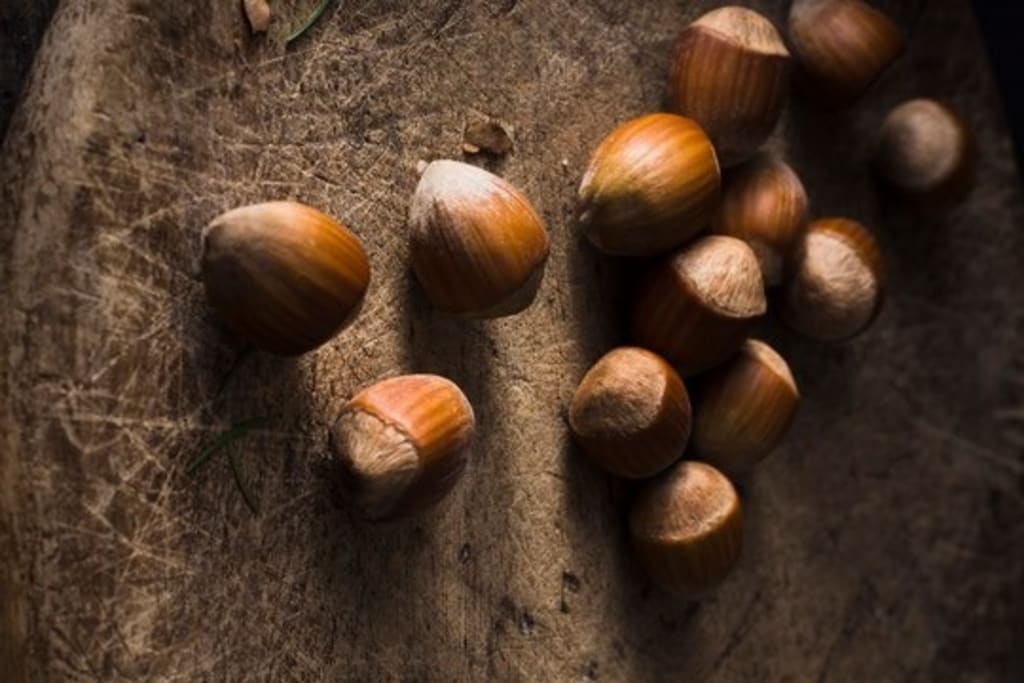
Most people identify nutmeg with the scent that fills the air in the winter. However, the nutmeg tree's natural habitat is very different from that of autumn in North America. It is a tropical evergreen that is indigenous to the South Pacific's warm Spice Islands. The tree is a striking feature in the environment with its dense, conical crown and glossy, scented, dark green leaves. Throughout the year, the tree occasionally displays flowers. They are little, barely noticeable, aromatic, pale yellow, and open at night.
Nutmeg is also known as ‘Myristica fragrans’ scientifically. It belongs to the Myristicaceae family. In India, people also call it ‘Jaiphal’. This spice tree is commonly grown and can grow up to 10 meters tall and bears two spices. They are used in confectioners, food preparation, and the pharmaceutical markets. People also use nutmeg in various cultural and spiritual activities. In some cultures, it is a symbol of luck, wealth or even fertility which is why it is found in many traditional medications and rites rituals.
While Mahindra tractors are known for their versatility, power, durability, and ease of maintaining, many growers opt for smaller, more maneuverable tractors suited for working between nutmeg trees. Mini tractor, or even compact tractors from brands like John Deere, can be ideal for navigating nutmeg groves. Regardless of the brand you choose, follow the post below for a comprehensive guide to nutmeg cultivation in India.
Places Where Nutmeg Can Grow:
As we already know, nutmeg grows well in warm, humid tropical climates with well-distributed rainfall. Below are some of the Indian states where farmers are cultivating nutmeg.
Top 4 Indian States Where Nutmeg Grows
- Kerala (90% production)
- Tamil Nadu
- Karnataka
- Goa
Medicinal Benefits of Nutmeg:
Nutmeg is a rich source of various nutrients that our body needs, such as iron, zinc, phosphorous, copper, manganese, vitamin C, vitamin E, vitamin A, and magnesium. This spice has various health benefits. Let’s discuss its benefits below.
- Works as a stimulant for the brain and reduces stress levels.
- Good for your heart health
- Aids in managing kidney problems
- Good for the digestion system
- It has anticancer properties.
- It can relieve abdomen, joint, and muscular pain.
- Treats insomnia
Process of Growing Nutmeg:
Nutmeg management has some critical stages that include weather conditions, soil requirements and soil preparation, watering practice, and control of pests and diseases. Below are several methods farmers can use to cultivate nutmeg in india.
Favourable Nutmeg Cultivation Climate:
This spice grows well in warm weather, with 20°C to 30°C temperatures. Also, this spice needs extra high humidity of between 70% to 90% since it is required during the flowering and fruiting of nutmeg. The farming area needs 1500 mm to 3000 mm of rainfall that must be fairly distributed all-year round. Farmers must also shelter the spice from powerful winds which are capable of breaking tender branches with resulting detriment to flowers and fruits.
Soil Requirements:
Nutmeg needs well-drained soil as its plant can tolerate waterlogging conditions. This spice grows well when the soil type is loam or sandy loam, the perfect range of pH for the soil should be between 5. 5 to 7. 5. Also, the soil should be rich in organic matter. Growers should regularly test the soil to maintain fertility. When preparing the land, especially for proper drainage, consider using a mini tractor or a compact tractor from a brand like John Deere Tractor.
Ground Preparation:
- Firstly, the grower should remove the existing vegetation, rocks, or debris from the planting area.
- They should test the soil to check its pH level and nutrient content.
- They should plough it to an adequate depth of about 30cm (12 inches), depending on the nature and type of soil.
- It is also possible to improve soil quality by adding compost, aged manure, or leaf mold.
- They should use a rake or a harrow in order to provide suitable bed for the germination of nutmeg seeds or the planting of seedlings.
Watering Techniques:
Nutmeg needs frequent irritation during the dry or summer season. The farmers should irrigate the nutmeg plants as much as possible during the dry or summer season to obtain high-yield or good-quality nutmeg. However, the watering will depend on the type of soil, season, size, or age of the plant. It will be appropriate if producers irrigate this plant using the drip irrigation technique.
Pest-illness Management in Nutmeg Cultivation:
Nutmeg plants are vulnerable to a variety of illnesses, including fruit rot, diplopia tip blight, shot hole disease, and other fungal infections. Pests like scale insects can also cause leaf wilting. To control these pests and diseases, it's important to monitor the crop regularly and implement pest control measures promptly. Farmers can use organic methods to minimise chemical use and save the environment.
Conclusion:
Growing nutmeg successfully can be a profitable business for the growers apart from the revenue generated from the ground spice and the satisfaction of cultivating a prosperous plantation. If you have read this article, you can find all the information related to the cultivation of nutmeg. It takes several years for trees to reach full productivity levels. It also requires constant attention and care.
About the Creator
Rajendra_Singh
I'm a agriculture blogger, who loves sharing my knowledge about growing things. On my blog, you'll find practical tips and interesting stories to help you get started!
Enjoyed the story? Support the Creator.
Subscribe for free to receive all their stories in your feed. You could also pledge your support or give them a one-off tip, letting them know you appreciate their work.






Comments
There are no comments for this story
Be the first to respond and start the conversation.